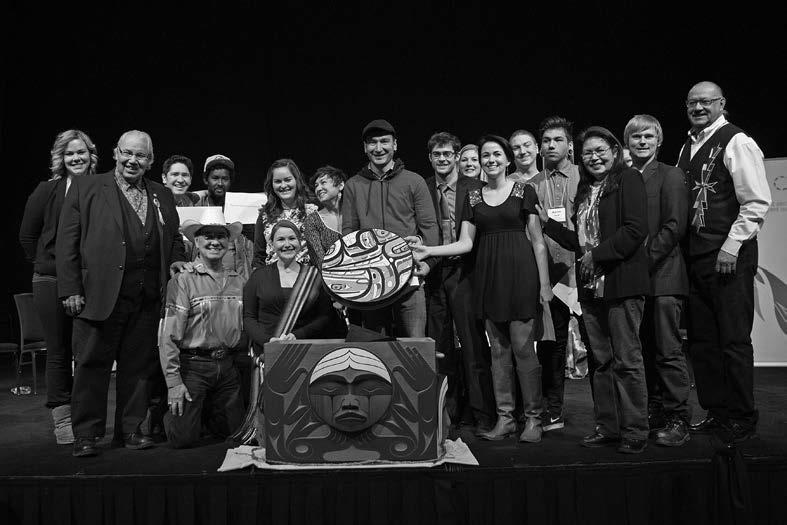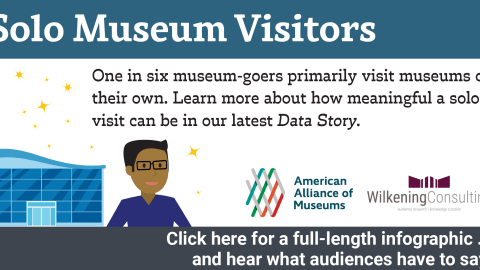
In his story for Museum 2040, Omar Eaton-Martinez posits a future in which the United States establishes its own Truth and Reconciliation Commission (TRC) to deal with the “atrocities and long-term impact of the genocide of First Nation peoples, enslavement of Africans, and incongruent immigration policies towards non-white peoples.” Futures studies teaches us that every plausible future has a toe hold in the present, so Omar’s story sent me in search of museums already formally involved in truth and reconciliation. Canada created a TRC in 2008 to address the damage inflicted by the Canadian residential schools that systematically separated indigenous children from their families.
Cara Krmpotich, Director and Associate Professor in the Museum Studies program at the Faculty of Information, University of Toronto, has worked extensively with museums engaged in reconciliation work, and in today’s guest post she envisions where that work may lead us by the year 2040.
–Elizabeth Merritt, VP Strategic Foresight and Founding Director, Center for the Future of Museums
Just over a generation ago, in 2015, the Truth and Reconciliation Commission (TRC) released its final report and Calls to Action in Canada. The truth it brought to light was the history of Indigenous children being taken from their families and placed in Residential Schools with the goal of assimilating them into Euro-Canadian, Christian society. It continues to inspire reconciliation between Indigenous and non-Indigenous Canadians, but less public reconciliations are also happening within Indigenous families and communities. Back then, one of the lead Commissioners of the TRC, Justice Murray Sinclair, suggested that since the residential school experience spanned seven generations, the work of reconciliation would likely take multiple generations as well. Following this advice, our museum started thinking in generations.
Although the TRC focused on Residential Schooling in Canada, it opened a much larger conversation about decolonization. Those of us trained in anthropology and ethnographic museums, thought we had been “decolonizing the museum” for many years prior to the TRC. There was the Native American Graves Protection and Repatriation Act in the US, the Assembly of First Nations and Canadian Museums Association Task Force Report in Canada, and constant conversations about collaboration, access, and post-colonialism. But in the wake of the TRC, the sense of power and purpose shifted. Museums were pushed to consider radical alternatives grounded in Indigenous sovereignty.
At our museum, we chose to listen to one message in particular: Give It All Away and Start Again. In 2016 Lakota artist and professor, Dana Claxton, suggested this action at the spring meeting of the Canadian Art Museum DirectorsOrganization, and soon after that her fellow artist, Tania Willard, transformed the sentiment into a work of art. Many institutions came up with rationales for why they couldn’t act on this suggestion. Our museum – a municipal museum like many others across the country – decided to dedicate our first generation of reconciliation work to “Giving it All Away.” We are now embarking on our second generation of work, which is to “Start Again,” with the re-creation of collections representing Indigenous peoples, built from scratch with full and informed consent.
Giving It All Away took a lot of time, starting with the effort to rally staff and board members to the cause. A few people resigned over this decision, but at least they didn’t try to stop what we were doing. We took the advice of Indigenous leaders to begin our reconciliation work by starting locally. It took time to earn the trust of Indigenous nations—but trust is at the heart of reconciliation.
The museum suspended its usual exhibition schedule for five years and used its galleries to bring all its Indigenous collections out of storage. Our exhibition budget was repurposed to bring groups from communities in to see the collections and, as Cree and Anishinaabeg Elders and Survivors phrased it, to identify which people belonged to which objects. We listened to the call to reconnect knowledge to place by moving public and school education programs out of the museum and into the communities. This practice ended up being so successful that it continues to be our main approach today. Museum educators currently run their programs on city streets, in ravines, at the lakeshore, in forests and on farms, and rarely in the museum. The museum’s collections are constantly in contact with the environment, as are ideas and our visitors.
It took twelve more years to give all our Indigenous collections back. Every possible destiny for those objects has been fulfilled. Now we are Starting Again. Our approach for this generation of reconciliation work is to collect through prior, free, informed consent. If donations are offered from non-Indigenous donors, we only accept them with the consent of the individual, family and/or First Nation who belongs with that item. We worry less about ownership and more about accountability, and this is reflected in the terms of our donation agreements. For Indigenous acquisitions, we plan for four generations of accountability between the museum and the individual, family and community, with the provision that after four generations either the item will revert back to the individual, family and community, or we will renew our stewardship by articulating our accountability to each other for the nextfour generations.
Our plan for the third generation of reconciliation work will require a fundamental rethinking of how our institution is funded. The city agreed to continue operational funding to the museum for a period of 40 years, after which time, we need to propose and justify a new budget model that reflects and enables our new ways of working. We are shifting from five-year strategic plans and ten-year director-led visions, to a museum practice based on twenty-year generations. We are just coming to understand what it means to work in generations, from measuring impact to planning staff positions, from predicting contingencies to maintaining relationships.
Our fourth generation of reconciliation will be the repatriation of the lands on which the museum sits. For now, we are learning to give away, to give back, without fear and without loss.
I’d like to acknowledge Dana Claxton and Tania Willard for bringing their ideas so powerfully into the world; members of our TRC Reading Group Courtney Jung, Melissa Levin, Jennifer Orange, Cheryl Suzack, and Neil Ten Kortenaar; Camille Callison; Lucy Bell, Nika Collison, and Vince Collison; the MMMC group; and colleagues and students at the iSchool. I have done my best to treat the ideas you’ve shared with me with respect. Any misunderstandings or errors are my responsibility.
Cara Krmpotich is Director and Associate Professor in the Museum Studies program at the Faculty of Information, University of Toronto. She teaches and researches in the areas of museum and indigenous relations, critical collections management, cultural property and material culture. Much of her work has been about getting Indigenous material heritage back into the hands of Indigenous peoples. She has worked in museums in the UK and in Canada, is active in the Ontario Museum Association, has written two books, and most recently, worked with Anishinaabeg and Cree seniors in Toronto, learning about their life experiences, collective memory, and urban Indigenous culture, all elicited through handling of collections. You can find her on Twitter @MMStCara









